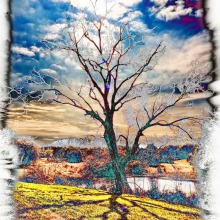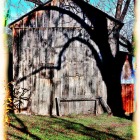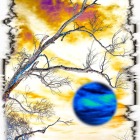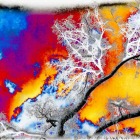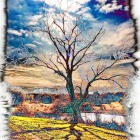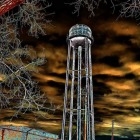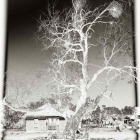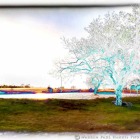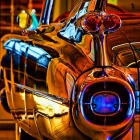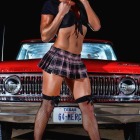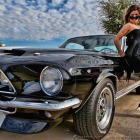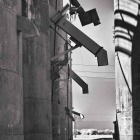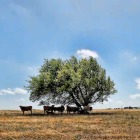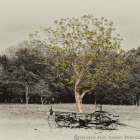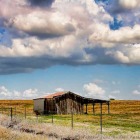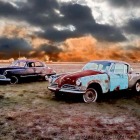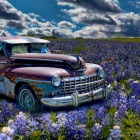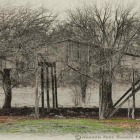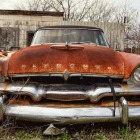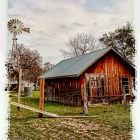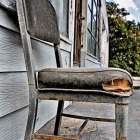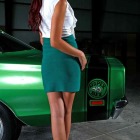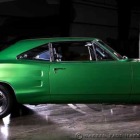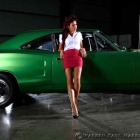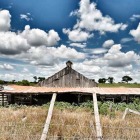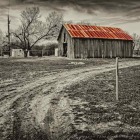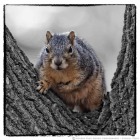About
“What a Long, Strange Trip it's Been”
At the age of 14, Mr. Harris was taught the fundamentals of film processing by his father, who learned the discipline while serving in the U.S. Navy during WW II. He bought his first 35mm SLR camera, a Praktica IV-F, in 1970, graduating to Nikkormat cameras and Nikkor lenses in 1973. After the 1971 earthquake that brought Southern California to a standstill, the widespread loss of power (and insomnia brought about by abundant aftershocks), encouraged Mr. Harris to explore time-exposure photography for the first time.
Working as a Technical Engineer for Motown Records and having friends throughout the entertainment industry opened the doors to live performance photography, which proved to be a natural fit along with his exposure at an early age to the psychedelic music scene in San Francisco during the mid—to-late 1960s. This, combined with Warren's background as a guitarist since the age of 14 - and a roadie with The Grateful Dead in 1968 proved to be a perfect training ground for Rock 'n Roll photography. He has photographed Sly Stone, Ozzy Osbourne, Metallica, Drowning Pool, Ted Nugent, Randy Travis and 3 Doors Down, to name a just a few.
Moving his family back to Marin County in 1975, Mr. Harris embarked upon his career as a Recording Engineer, working with numerous local and national artists, photographing their performances and promo materials, and honing his photographic skills.
In 1981, with increased fiscal responsibilities, Mr. Harris, as he puts it “hung up his cameras” to pursue a more lucrative career in the technical field, opening AudioCraft Engineering, and operating it for 6 years. Needing a change of environment, he joined Symantec Corporation as a Technical Marketing Specialist, for three years before opening his own computer consulting firm in 1994, which he relocated to Plano, Texas in 1999.
Mr. Harris credits an art class taken in 1992 with vastly improving his appreciation of art and his compositional skills, while confirming his long-held belief in an inability to draw anything recognizable.
An epiphany in 2006, caused him to re-embrace his first love of photography, acquire new digital equipment, and attack the art form with a vengeance, determined to make up for what he feels is “lost time”. Never without a camera, Warren captures new images for his library on a regular basis, embracing digital manipulation to create his frequently dark and other-worldly images. In spite of being advised by a multitude of friends and relatives that “There is nothing to see in Texas.”, Warren pursues the obscure and fascinating beauty he finds throughout the vast expanse of the Lone Star State. Content to ride his Harley for hours at a time down endless 2-lane highways, exploring the myriad small towns that pepper the Texas countryside, he finds gems of Texas history everywhere he trains his lens.
In 2010, Mr. Harris sold his computer consulting firm to dedicate more time to photography. His commercial studio was consolidated into climate-controlled storage. Current projects are now shot on location. He is putting his free time to very good use traveling with his wife while collecting new images for various themes. In development are several coffee table books, the first of which, Texas As I See It, was published by Brown Books in November 2011. Four more volumes on Texas plus a Route 66 book are in development.
He has freelanced for local newspapers and magazines as well as international publications over the years. Warren shoots projects for local businesses and government offices, does occasional portraits and participates in art shows. His work is on permanent display in City buildings, Ebby Halliday offices and in the homes of collectors across Texas.
Referred to as a “Renaissance Man” on more than a few occasions, Mr. Harris loves cabinet making, welding, playing guitar, and is as comfortable with electricity and electronics as he is with woodworking, construction and plastic fabrication. As early as his twenties, Warren was an accomplished calligrapher, has done some acting for commercials, local productions and a Korean Mini-Series, and enjoyed a minor career in the Voiceover field.
Mr. Harris was also part of the team that created the first computerized house in Tiburon, California in 1983, interfacing all the computer systems, security and optical light collection devices. Warren prototyped the first digital 3D goggles for StereoGraphics. He designed and built (or retrofitted) numerous recording studios throughout Northern California, including MC Hammer's recording studio and custom home. His clientele included Boz Skaggs, Randy Jackson and Ray Lynch as well as members of Huey Lewis and the News and Journey. He engineered studio projects as well as live performances at every major Bay Area venue from 1975 to 1992, when it “was time for a change” and he exited the entertainment scene for the last time.
In a departure from photography, Mr. Harris has been exploring the creation of abstract digital art, some of which can be found at VividPixelz.net
Warren sleeps less than 5 hours a night, proclaiming “There's plenty of time to sleep when you're dead.” He loves to prowl the Dallas / Fort Worth Metroplex in the wee hours past midnight in pursuit of dramatic nocturnal cityscapes. www.nocturnalvisions.net is dedicated solely to his Cities@Night Project. His wife has often suggested he open up a donut shop - or get a newspaper route to fill his abundant pre-dawn free time.


